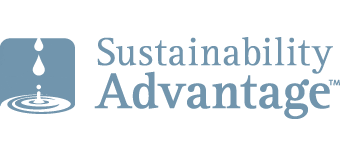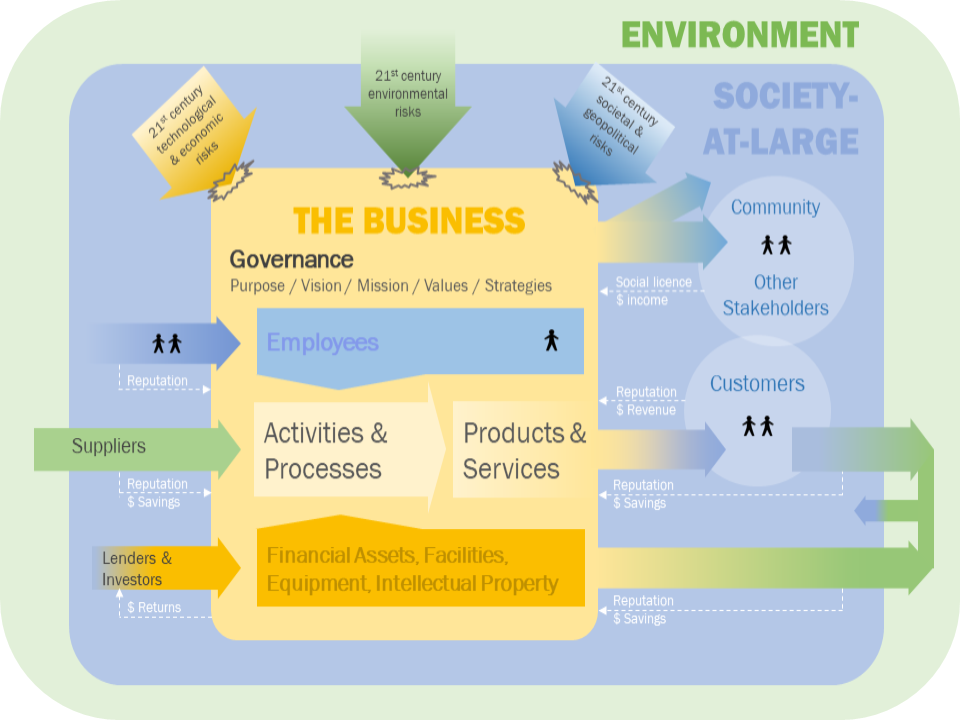6 Design Criteria for 21st Century Business Models
A company’s business model is its blueprint for what it does, how it does it and how it generates enough income to be at least a going concern. Traditional 20th century business models imply that a corporation is an island, independent of societal of environmental boundaries and myopically focused on maximizing shareholders wealth. It’s time for an upgrade to a model that is fit-for-purpose in today’s volatile and risky economy. As encouraged by the Business Roundtable, a 21st century business model explicitly acknowledges the company’s surrounding environment and its purposeful stewardship of the wellbeing of other stakeholders. Building on other guidance on what a business model should contain, here are the 6 design criteria for 21st century business models.
- Acknowledge nested interdependencies: Make visible how the business is nested in Society, which is nested in the Environment on a finite planet. It legitimizes the Environment and Society-at-Large as two key stakeholders and affirms the accountability of the business for its direct and indirect impacts on their wellbeing. Business models used in the Flourishing Business Canvas, Integrated Reporting and Future-Fit Business Benchmark meet this criteria.
- Show stakeholder impact points: Make visible where the business directly or indirectly impacts key stakeholders, to facilitate tracking, managing and reporting on how well the company is fulfilling its 21st century “maximize stakeholder wellbeing” purpose. Again, the Flourishing Business Canvas, Integrated Reporting and Future-Fit Business Benchmark business models meet this criteria.
- Show reputation, savings and income flows: Make visible the sources of reputation, savings and income that flow back into the business, enabling it to flourish. Integrated Reporting reinforces the material relevancy of impacts on natural, human, and social-and-relationship capitals to business financial success.
- Include new risks: Make visible how new global environmental, social, technological, economic and geopolitical risks are threatening businesses. The World Economic Forum’s Global Risks report ranks these new 21st century business risks. They warrant explicit mention in business models to support their inclusion in 21st century enterprise risk management processes.
- Show traditional flows: Show the overall input‒process‒output flow between the business, Environment, Society and other stakeholders. The Life Cycle business model, Stock-Flow framework and Integrated Reporting model do this.
- Show reputation, savings and income flows: Make visible the sources of reputation, savings and income that flow back into the business, enabling it to flourish. Integrated Reporting reinforces the material relevancy of impacts on natural, human, and social-and-relationship capitals to business financial success.
- Include traditional business elements: Show traditional, value-creating business model components, to the desired level of detail. The Business Model Generation canvas and the Flourishing Business Canvas contain these traditional elements.
Here is a draft of a business model template that meets the six criteria:
The model includes all the company’s moving parts and direct and indirect impact points. The template can be tailored for any company of any size, in any sector, anywhere. Companies that already have business model figures can readily upgrade them to meet the six design criteria. They can also expand and tailor the supply chain networks, activities and processes, products and services, channels, customers and other stakeholder elements to better represent their situation. And, of course, they can jazz up the graphics.
More importantly, a company can use the big picture provided by the business model to ensure they are paying attention to all the elements and stakeholders that will enable it to thrive in the 21st century. The business model is fit for purpose as a 21st century management tool.
Please feel free to add your comments and questions using the “Leave a reply” comment box under the “Share this entry” social media symbols, below. For email subscribers, please click here to visit my site and provide feedback. Slides shown are in the “Business Model and Dashboard Templates” deck available on my Business Model Tools webpage and will be included in my next quarterly release of Master Slide Decks, to which anyone can subscribe.






Comments are closed.